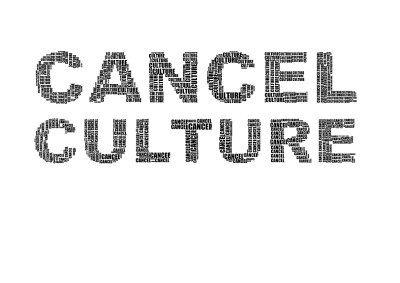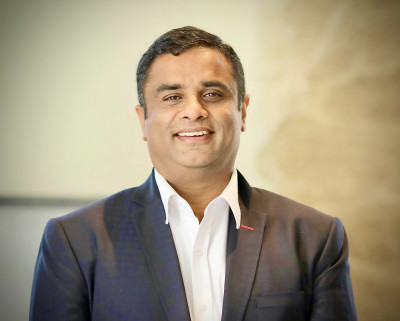PR in the times of boycott culture Part 2: Salvaging a bruised brand
Corporate communication/ PR executives have to play a crucial role in aligning the organisation's messaging and actions with its values and mission during a crisis caused by boycott calls from social media.
In this two-part Indepth feature report, Adgully seeks to figure out the role of Public Relations in such situations. How can PR organisations help a brand salvage a situation when negative events threaten the brand’s reputation? What should be the role of the PR? What strategies can be employed to respond to boycott calls from nefarious elements and minimise their impact on the organisation’s reputation and trust factor?
Also read:
PR in the times of boycott culture Part 1 – When ‘Woke’ hurts
Part 2 of this Indepth feature report will talk about the importance of media relations, lessons learned from past crises, and much more.
“A crisis always tests the integrity of a brand,” points out Amrit Malik, Associate Manager, Evoc. According to her, the PR and communications teams have to lead from the front during any crisis situation, more so when it’s a boycott campaign against the brand unleashed on social media.
“Careful planning, effective communication, and a commitment to authenticity are the three tenets all PR and communications executives must adhere to when confronted with a crisis situation. First and foremost, it’s the responsibility of the PR teams to have a comprehensive crisis management and communication plan ready even before a crisis strikes. An effective plan must draw out a wide range of possible crises by identifying potential risks and vulnerabilities and outline standard operating procedures to deal with each of those scenarios,” she adds.
Secondly, says Amrit Malik, the PR team must ensure that the brand’s messaging as well as its actions during the crisis are fully aligned with its core values. Put simply, she adds, a brand must not surprise or confuse its stakeholders during a crisis by saying something or behaving in a way that is not consistent with its history, especially when these stakeholders have a heightened interest in following how the brand is responding to the crisis in question. Otherwise, she points out, it will inevitably lead to cognitive dissonance for stakeholders, possibly causing long-term damage to the brand’s reputation.
“A corporate communication team has to play a critical role in aligning the organisation’s messaging and actions with its values and mission during a crisis caused by boycott calls from social media,” says Varghese M Thomas, Chief Communication Officer, Greaves Cotton. As the custodians of the brand, the communication team should review the organisation’s values and mission and ensure that they are consistent with the current environment and the expectations of stakeholders. It is also imperative to ensure that the key messages align with the organisation’s values and mission and are consistent across all communication channels. This messaging, both internal and external, should be transparent, honest, and empathetic towards the stakeholders’ concerns.”
And then, the corporate communication/ PR executives will have to work with other departments, such as legal or marketing, to ensure a coordinated response to boycott calls from social media, and mitigate any legal or financial risks associated with the crisis.
If it is an organisation where a boycott movement can impact revenue or shareholder value, then there needs to be a common cord to streamline financial, reputational, and legal impact, points out Kunal Kishore, Founder and Director, Value 360 Communications. Each aspect, according to him, must be kept in consideration while framing the crisis strategy to ensure that the boycott call impacts none of them.
Effective teamwork is of paramount importance in managing such a crisis, points out Amrit Malik, adding that during any crisis situation, organisations often take an ‘All Hands on Deck’ approach.
“While the PR and communications team has to lead the response, they need to work closely with the legal and marketing teams, the latter, especially if the boycott was triggered by a new ad or marketing campaign. Effective teamwork is required to not just craft the right statement or response, but to also pick the right place and time to send it out. Of course, the legal team needs to vet all statements to ensure they are not running afoul of any laws. But the PR team needs to ensure that all statements are aligned with the organisational vision, mission and values and are seen as authentic, honest and ‘on brand’ by all stakeholders, not just the aggrieved parties,” says Amrit Malik.
Further, she adds, given that there is heightened media sensitivity to a brand’s messaging while it’s undergoing a crisis, the PR team must take this opportunity to reiterate the brand’s values through media outreach, including interviews with senior executives. “An additional benefit of this low-cost strategy is that it can increase your brand awareness and drive website traffic. As Churchill said, ‘never let a good crisis go to waste’,” she says.
Varghese M Thomas also points out the importance of the corporate communication/ PR executives to work with other departments, such as legal or marketing, to ensure a coordinated response to boycott calls from social media and mitigate any legal or financial risks associated with the crisis.
According to him, it is also advisable to work with the investor relations and HR team to manage any untoward escalation, both internally and externally.
Here are some ways in which they can collaborate:
- Establish a crisis management team: The organisation should establish a crisis management team that includes representatives from all relevant departments, including legal, marketing, and PR. This team should work together to develop a coordinated response to the boycott calls.
- Develop a crisis communication plan: The crisis management team should develop a crisis communication plan that outlines the roles and responsibilities of each department, as well as the key messaging and communication channels that will be used.
- Conduct a risk assessment: The legal department should conduct a risk assessment to identify any legal or financial risks associated with the crisis. This can help the organisation to take proactive steps to mitigate these risks.
- Coordinate messaging and actions: The PR, legal, and marketing departments should work together to ensure that their messaging and actions are coordinated and consistent. This can help to avoid any confusion or contradictory statements that could harm the organisation's reputation.
- Anticipate potential legal issues: The legal department should anticipate any potential legal issues that may arise from the boycott calls and work proactively to mitigate these risks. This can include reviewing contracts, identifying potential liability issues, and working with external legal counsel.
- Monitor and evaluate the response: The crisis management team should monitor the response to the boycott calls and evaluate the effectiveness of the organisation’s actions. This can help the organisation to make any necessary adjustments and learn from the experience.
By working together, the PR, legal, and marketing departments can ensure a coordinated response to boycott calls from social media and mitigate any legal or financial risks associated with the crisis, says Varghese.
Managing media
Then come to the most crucial part – managing the media. The corp comm/ PR executives have to leverage their relationships with media outlets and journalists to shape the narrative around the crisis and control the messaging being circulated on social media.
Whenever there is a crisis of this kind, you need to have alternate thoughts and narratives published in the media, says Kunal Kishore. For this, he adds, brands need a pool of credible, neutral voices that do not have a vested interest in the business. According to him, these voices can introduce logical points into the discourse and influence the conversation to de-escalate the situation. This is where relationships with media outlets and journalists can help during crisis situations, he points out.
A major crisis always puts an organisation in the spotlight, states Amrit Malik. “The media, just like any other stakeholder, is more sensitive and receptive to hearing the brand’s side of the story. PR teams must take this window of opportunity to communicate the brand’s story effectively and convincingly. An important tenet of PR is ‘if you do not tell the full truth then people will start manufacturing their own versions of the truth”. If the organisation via its spokespersons does not handle a crisis situation with an effective narrative, there is a risk that others will inevitably start spreading rumours by assuming the worst possible scenarios," she points out a highly crucial aspect.
As such, she adds, PR executives must work closely with the media and provide them with relevant information, context and messaging that answers both existing as well as any potential questions that the stakeholders might have. “Once the stories are published, they can be further amplified via social media platforms. Of course, direct statements and posts from the organisation’s handles or those of senior executives is also necessary to maintain full control of the narrative on social platforms,” she adds.
According to Varghese, corp comm and PR executives can leverage their relationships with media outlets and journalists to shape the narrative around the crisis and control the messaging being circulated on social media by being proactive and transparent.
He feels that they should provide accurate and timely information to journalists, respond to media inquiries promptly, and offer expert opinions to help journalists understand the situation better.
“Building strong relationships with media outlets and journalists requires constant engagement and collaboration. It is also essential, to be honest, and transparent, acknowledging any mistakes made and taking responsibility for them. By providing credible information, responding to media inquiries promptly, and building relationships with journalists, corporate communication and PR executives can influence the narrative around the crisis and control the messaging being circulated on social media,” he says.
Be honest in the messaging
What lessons can be learned from past crises caused by boycott calls from social media, and how can these insights inform the development of crisis management plans and protocols going forward?
Experts are of the opinion that brands need to exercise circumspection and equanimity in the face of a crisis. Resorting to knee-jerk reactions of any kind can be counter-productive. And most importantly, the messaging has to be honest and clear.
Social media boycott campaigns have been around for a long while, going as far back as to the earliest days of platforms like Facebook and Twitter, says Amrit Malik. “A scrutiny of how most of these campaigns played out and how the concerned organisations responded throws up some valuable lessons, the foremost being that brands must never bow down and apologise as a knee-jerk reaction to a boycott call. Oftentimes, business leaders in their eagerness to quickly kill the campaign push hard for an immediate and unconditional apology, even while knowing well that the brand did nothing wrong in the first place. But true brand custodians recognize that tendering apologies in such cases not only weakens the brand and hurts the organisation’s reputation, but can also alienate and put off actual customers who no longer wish to identify with a brand that lacks conviction and cannot even stand for itself when faced with a crisis,” she says.
Secondly, Malik adds, irrespective of whether the brand chooses to stand up or bow down and apologise, its public statements and quotes must always be polite and empathetic, lest it comes across as arrogant or rude. “All public messaging should stick to the facts, provide a full context, and adequately explain the reasoning behind the course of action chosen by the organisation, while also staying authentic and true to the brand’s values as noted earlier.”
The foremost learning for brands is that they must listen to their PR agency, says Kunal Kishore emphatically. “Let them control the narrative by bringing in voices of authority to neutralise the situation. A crisis should not be seen as a fire that needs to be put out immediately; you need to let the PR team assess the situation and mitigate potential losses. We are living in a noisy world where the media picks up what is conversational. A crisis, especially a boycott movement, might look out of control, but if the right steps are taken, businesses can recover from the reputation loss. A long-term perspective must come into play instead of instant panic. It is also important to remember that honesty is the best tool in times of crisis resolution,” he adds.
There have been several high-profile crises caused by boycott calls from social media in the past, such as the #DeleteUber campaign and the Starbucks racial bias incident, points out Varghese. “This is nothing new for us in India too. These incidents, though quite stressful, offer valuable lessons that can inform the development of crisis management plans and protocols going forward.”
According to him, organisations should keep the following points in mind during crisis situations:
- Be proactive: The earlier an organisation responds to a crisis, the better. It's important to have a crisis management plan in place that can be activated quickly to mitigate the impact of the crisis.
- Monitor social media: Social media can be a powerful tool for spreading information and influencing public opinion. Organisations should monitor social media closely during a crisis and respond quickly to any negative sentiment or misinformation.
- Be transparent and authentic: In a crisis, organisations need to be transparent and authentic in their communication with stakeholders. This can help to establish trust and credibility and demonstrate a commitment to accountability.
- Communicate effectively: Effective communication is key to managing a crisis. Organisations should have a clear and consistent messaging strategy that is tailored to different stakeholders and communication channels.
- Take action: In addition to communication, organisations should take concrete actions to address the underlying issues that led to the crisis. This can help to demonstrate a commitment to change and rebuild trust with stakeholders.
- Learn from the experience: After a crisis, it’s important to conduct a thorough review and analysis of the organisation’s response. This can help to identify areas for improvement and inform the development of crisis management plans and protocols going forward.
By learning from past crises caused by boycott calls from social media, Varghese adds, organisations can develop more effective crisis management plans and protocols that can help to mitigate the impact of future crises.
Use of social media
And then it is equally important for corp comm/ PR executives to use social media and other digital channels to communicate transparently with stakeholders during the crisis and keep them informed of the organisation's response to boycott calls.
As mentioned above, honesty is the best tool during a crisis, states Kunal Kishore. “Acknowledgement, transparency, and ownership go a long way in assuaging hurt sentiments. Fortunately, today businesses have access to several digital channels to communicate their response with different stakeholders and assess the impact of their response in real-time. In this scenario, PR teams can help strategise, devise the messaging, and identify the right platforms to share this message.”
An effective social media communication strategy must follow the high-level response strategy that the organisation has chosen – whether to watch quietly, to stand firmly behind its action or marketing campaigns, or to apologise, says Amrit Malik.
Further, she adds, the social strategy has to choose among sources: organisation or brand handles or those of its senior leaders or even third party influencers; content types: text, image or videos; audiences; and even the platforms.
“For example, we have seen many CEOs use Twitter threads effectively to tell their side of the story during a crisis. Hearing it straight from the CEO can be more effective for the concerned stakeholders. Of course, these posts can be further amplified by the organisation’s own channels. Writing a detailed statement on a document and posting a screenshot is another popular way of communicating via Twitter, especially in the case of an organisation’s own handle. However, a statement in the form of an image is not very reader-friendly, and hence posting a thread is a better idea. Alternatively, organisations can also publish a blog post and link to it from their Twitter handle. On LinkedIn too, publishing an article or linking to a blog is better than simply publishing a screenshot of a detailed statement. On more visual platforms like Facebook or Instagram, however, it is better to use videos to communicate,” she explains.
Corp comm/ PR executives can use social media and other digital channels to communicate transparently with stakeholders during a crisis and keep them informed of the organisation’s response to boycott calls, says Varghese.
He lists out some ways in which they can do this:
- Provide regular updates: During a crisis, stakeholders will be looking for regular updates on the organisation's response. PR executives should use social media and other digital channels to provide timely and accurate information to stakeholders.
- Respond to comments and questions: Social media provides an opportunity for stakeholders to engage with the organisation and ask questions. PR executives should monitor social media channels closely and respond to comments and questions transparently and authentically. This will help to mitigate the impact of boycott calls on the organisation's reputation.
- Use visual content: Visual content, such as infographics and videos, can be a powerful tool for communicating complex information and keeping stakeholders engaged during a crisis.
- Leverage influencers: Social media influencers can be valuable allies during a crisis. PR executives should identify relevant influencers and work with them to amplify the organisation's message and reach a wider audience.
- Use social listening tools: Social listening tools can help PR executives to monitor social media conversations and identify any emerging issues or negative sentiments towards the organisation. This can help them to respond quickly and proactively to any potential crises.
- Be transparent and authentic: In all communications, PR executives should be transparent and authentic. This can help to establish trust and credibility with stakeholders and demonstrate a commitment to accountability.
By using social media and other digital channels to communicate transparently with stakeholders during a crisis, PR executives can keep stakeholders informed and engaged, and help to mitigate the impact of boycott calls on the organisation’s reputation.
The measurement game
And it is important for corp comm/ PR executives to measure the effectiveness of their crisis management strategies in responding to boycott calls from social media and adjust their approach accordingly.
Listening becomes very important during a boycott movement since it is the only way to assess public sentiment, says Kunal Kishore. Again, he adds, digital platforms help us understand the trends and gauge the sentiment in real-time. If the crisis response further fuels negative sentiments, brands can evaluate their options and tweak their approach accordingly.
PR teams can use both qualitative and quantitative metrics to assess the success of their crisis management strategy, says Amrit Malik.
An obvious metric, according to her, is the volume of brand mentions, or of mentions with negative sentiment, which can be easily tracked by monitoring tools. Tracking this metric can give executives a sense of the crisis’ impact on the public perception.
“Another important metric to track is the impact on sales. This is particularly relevant for e-retailers or consumer brands that are at direct risk of losing customers, even if temporarily, due to a boycott campaign. By tracking sales figures, executives can measure the impact of the crisis on revenue and identify any long-term effects on the brand's reputation. Further, executives can also monitor external commentary such as articles or opinion pieces in the media or comments from industry analysts and experts both on social media as well as in traditional media. This can provide insight into how the crisis is being perceived by the public and help executives adjust their strategies accordingly,” she says.
“PR crisis – we are all frightened of it,” admits Varghese, adding, “In an ideal world, a well-managed company wouldn’t have to worry about such a thing. Unfortunately, we don’t live in a perfect world. The question is not if a crisis will strike but when it will happen. After executing a crisis plan, corp comm/ PR executives can measure the effectiveness of their strategies in responding to boycott calls from social media in several ways. While some aspects may be challenging to quantify, the most important metrics to track will depend on the business’s post-crisis goals and the decisions senior leaders know they must make soon to mitigate the risk of such a crisis happening again in the future,” he says.
He lists out some examples:
- Monitor social media metrics: Social media metrics, such as engagement rates, sentiment analysis, and reach, can provide valuable insights into how stakeholders are responding to the organisation’s crisis management strategies. PR executives can track these metrics and adjust their approach accordingly.
- Measure short-term sentiment and long-term perceptions: An organisation can measure the sentiment of the immediate public response that plays out on social media and assess if it’s improving throughout the management of a crisis. The long-term impact should be measured with a perception study.
- Conduct focus groups: Focus groups can provide more in-depth insights into stakeholders’ perceptions of the organisation’s crisis management strategies and offer suggestions for improvement.
- Analyse media coverage: Media coverage can also provide insights into the effectiveness of an organisation’s crisis management strategies. PR executives can analyse media coverage to determine if their messaging is resonating with stakeholders and adjust their approach accordingly.
- Measure how quickly the news cycle passes: The best measure is no measure at all. When companies face a crisis, they often hope to turn a negative into a positive quickly. This is misguided because humans need time to process. Time will heal the perception, but in the immediate aftermath, the best measure is how little talk there is about your company.
- Review internal processes: PR executives can review internal processes and procedures to identify any bottlenecks or areas for improvement in their crisis management strategies.
“By measuring the effectiveness of their crisis management strategies in responding to boycott calls from social media, PR executives can adjust their approach and improve their response to future crises. It’s important to continually evaluate and improve crisis management strategies to ensure that the organisation is prepared to respond effectively to any potential crises,” Varghese concludes.









Share
Facebook
YouTube
Tweet
Twitter
LinkedIn